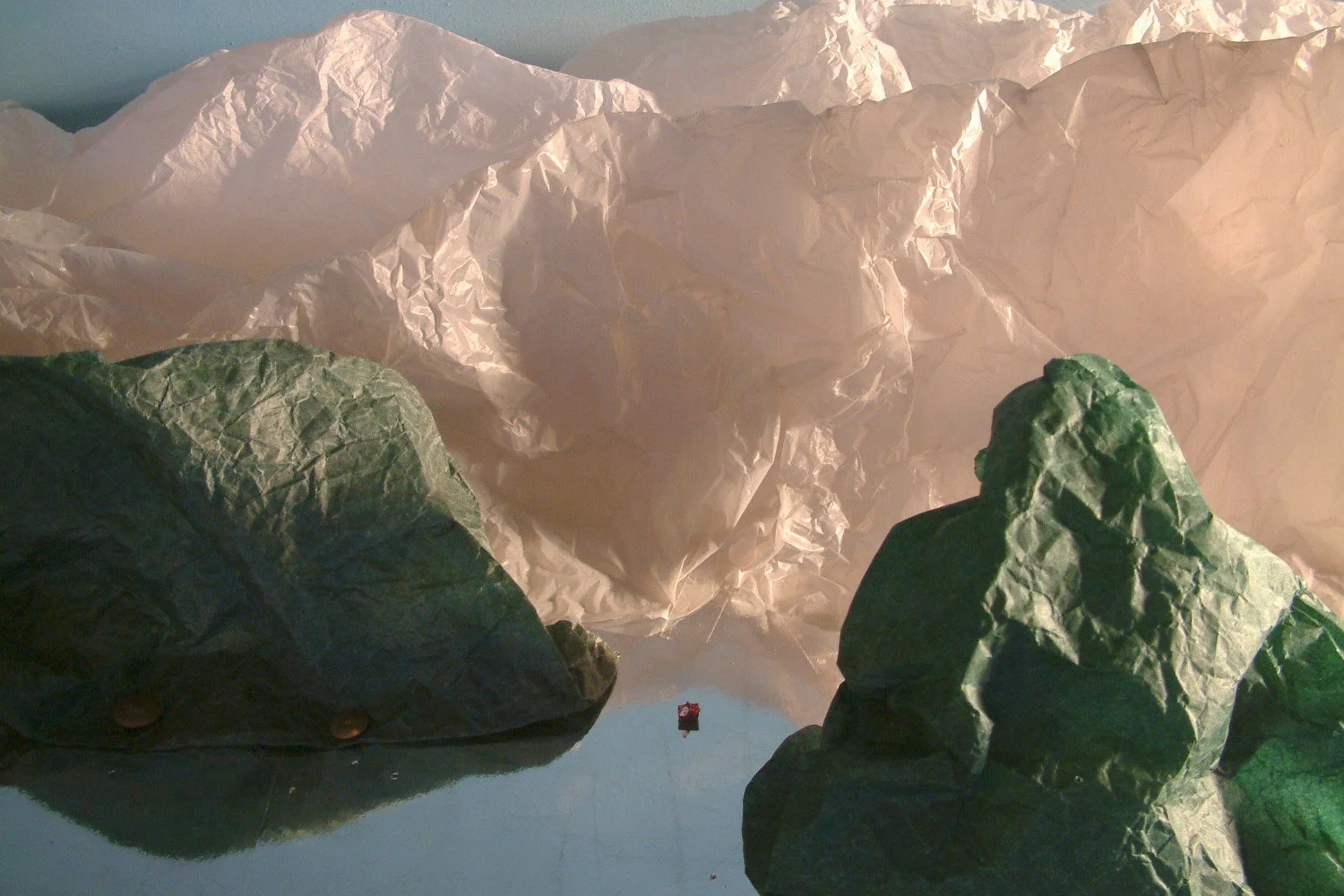Elaine Campaner
A Celebration Pt. 1 (2000-2010)
ESSAY | Gallery 9 | May 2022
Tenderly and tenaciously, Elaine Campaner (1969–2020) showed us the profound potentiality of “stuff”. Campaner’s photographs, depicting handmade dioramas of found objects, purveyed deeply felt messages primed with microcosmic punch. Duality and paradox thrive in these pictures, the sacred fraternising with mundanity and materialism in a slow dance that stirs up questions to shake the bones of society.
Objecthood, in Campaner’s diminutive scenes, is densely coded – each knick-knack carrying within its manufactured membrane the promise of metaphor and illusion. Analogising her photography to painting, Campaner suggested that the object merely replaces the brush. She situated her images within the genres of history painting, landscape and portraiture. Working with the constraints of real time and real space, her photographs were low tech and intuitive, constructed by hand without digital manipulation and open to accident. Household items, packaging, toys, souvenirs, plastic bags, domestic detritus, bluetac – each item is layered like a slathering of oil on the canvas to create spatial depth and visual illusion. Object as gesture. Tableaux as trope. We see the artist’s hand through her free association with materiality.
Different realms rub up against each other in these works, causing just enough warm friction to prick our cognizance concerning the paradoxes and politics of contemporary life. Sublimity hatches from banality in many of Campaner’s landscapes: plastic bag clouds, a spoon for a view, coffee cup scenery, an ocean of crinkled cloth. The artist modelled each scene with materials always manufactured, never natural, offering an inflammatory edge to the vicissitudes of nature and the natural. Other photographs summon social commentary through allusion, seen sharply in the series ‘The New Testament according to small children’ (2000), where a pairing of Barbie and the Bible marries consumer culture with Christianity. Mattel’s infamous doll posing as biblical figures like John the Baptist explores the function and formation of the ‘icon’, whilst also quarrying a ton of other contemplations surrounding Western pedagogy, capitalism as religion, childhood and consumer culture.
There is something theatrical about Campaner’s photographs. Always immaculately choreographed, they self-consciously sing of their own construction whilst still inviting us to traverse the fourth wall. We are pulled into these intimate micro worlds, shrunk down and sized up, confronted with the cool caress of plastic surfaces and sunless light in ways that feel both cinematic and sinister. Uncanny vignettes play out in an endless reel as the picturesque mutates into something subversive. For Campaner, this overtly constructed nature was a recognition that we don’t believe in photographs anymore: “In a time when images are censored and manipulated in the interests of commercial and state power, I am interested in the idea that perhaps the closest image to reality we may ever experience is a construct of what we suspect but are not allowed to see for ourselves”. We see this message in series such as ‘Internment’ (2006) and ‘Lapped’ (2005-07), where Campaner created a new kind of historic record documenting the anonymity of individuals incarcerated within detention facilities, prisons and internment camps. Tensions between institutional power and personal vulnerabilities are sharpened through the simple tropes of plastic figurines and wire mesh. Herein lies the bite, and beguile, of Campaner’s art; how with humility and tenderness each scene wraps its arms around our neck, inviting us to linger for a moment in the nostalgic embrace of dolls, mugs, souvenirs, before imparting the conceptual sting of our collective reality, then and now.
